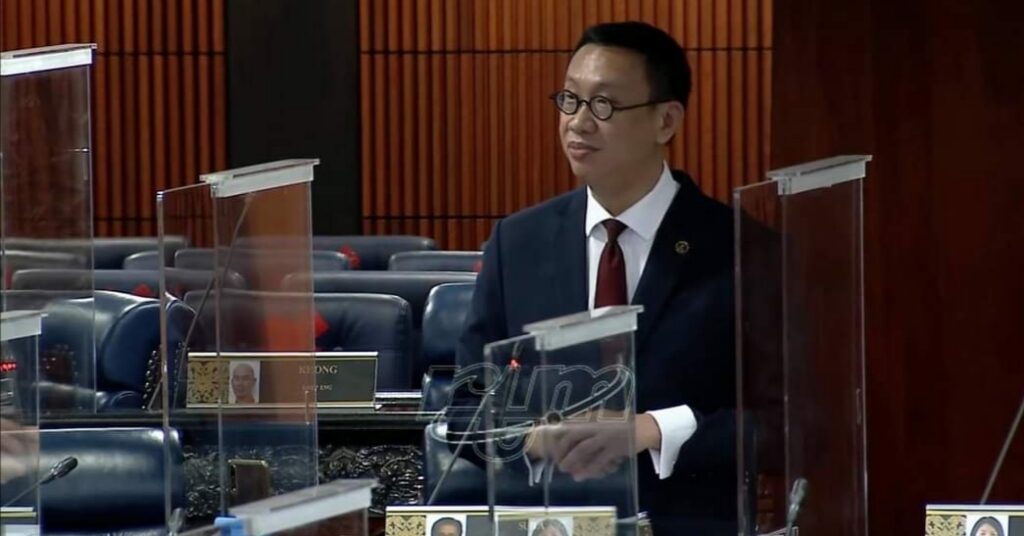Najib replies Wong Chen concerns on EPF withdrawal
 Since Wong Chen is one of the very very few PH leaders genuinely interested about the running of the country rather than rely on propaganda attacks against me, I will reply your concerns about MOF expanding the EPF account 1 withdrawal scheme to RM10,000 and to as many as 8 million members.
Since Wong Chen is one of the very very few PH leaders genuinely interested about the running of the country rather than rely on propaganda attacks against me, I will reply your concerns about MOF expanding the EPF account 1 withdrawal scheme to RM10,000 and to as many as 8 million members.
Firstly, the initial scheme covered only 600,000 members. It was then promptly expanded to 2mil members and yet it still only covered active members (defined as still making contributions to EPF over the past few months) who had lost their jobs, was put on no pay leave or had completely lost their income.
However, this revised scheme had left out millions of Malaysians who had not contributed to EPF in years or those active contributors lucky to still have a job but have seen their monthly income drasticaly reduced due to reductions in commissions, working days, service points or had their base salary reduced during this once in a 100 years pandemic crisis.
It had also left out millions of domestic partners who had left the workforce years ago to take care of the family but had previously contributed to EPF. There are many in this group who had wanted to withdraw from EPF to help their struggling spouses who may not have previously contributed to EPF as they are running their own small business or have insufficient balance in their EPF.
On a macroeconomics level, I had also raised concerns that the total size of budget 2021 of RM322.5 billion is only 2.5% bigger than budget 2019 of RM314.6 billion under the PH government.

That is why I was not convinced that budget 2021 was enough to save the economy and preserve the livelihood of Malaysians given that there was no Covid crisis (or crisis of any sort) in 2019 and yet the economy had weakened considereably until GDP growth dropped to its lowest in 10 years despite a massive government budget that year.
That is why i had insisted on the EPF withdrawal and loan moratorium extension being part of the budget in order for more cash to be put into peoples’ hands to stimulate the local economy and to help those most in need but was overlooked earlier.
Just the RM70 billion injection from the EPF withdrawal alone would increase the size of new cash injected into the economy under budget 2021 from 2.5% to 34.4% higher than budget 2019.
You could say that my motivation is two fold – help those in desperate need and to save the economy.
You had raised concerns if EPF could afford the withdrawals estimated at as much as RM70 billion by MOF when you wrote this:
“If he carries out his proposal next year to allow 8 million depositors to withdraw RM70 billion for Covid-19, the EPF for 2021, will need to raise additional funds of RM50 billion (RM70 billion (Covid-19 withdrawals) minus RM20 billion (net inflow)).”
Actually, EPF will not need to “raise” or “borrow” additional funds.
Under the Section 26 of the EPF Act, at least 50% of EPF assets must be in the form of government securities or bonds. This limit can be relaxed with written approval from MOF.
Therefore, 50% of the EPF’s assets of around RM940 billion is currently in this liquid form and an outfall of RM70 bilion is just 7.4% of EPF’s total asset size.
Given the low interest rate environment over the past few years, yields from this asset class is typically lower than EPF’s yearly dividen rate.
This means liquidating this government bonds asset class will not lower EPF’s yearly dividends as there is no need for EPF to liquidate their higher returns assets such as equities, direct ownership in companies and properties.
Therefore in order to meet the cash flow needs of the estimated RM70 billion withdrawals, EPF can simply liquidate these bonds into the secondary bond market where there are ready buyers.
Alternatively, I had also suggested that EPF could also sell bonds to Bank Negara Malaysia (BNM) in order to minimize the impact on our secondary bond markets and prevent any sudden spike in yields.
Under existing laws, BNM is allowed to purchase and hold government bonds either directly from the government or from the secondary market.
In fact, as of end September, BNM had purchased RM9 billion worth of government bonds.
When BNM buy bonds, new money is created and injected into the economy. This is a form of quantitative easing that is practised by many western countries.
Even our neighbour Indonesia is doing this right now to fight the Covid economic crisis.
There is little risk of inflation with BNM practising quantitative easing right now as we are now in a deflation environment given that Malaysia has registered negative inflation throughout this year due to collapslng demand and oil prices arising from the Covid crisis.
This move from BNM to temporarily hold government bonds is also reversible as BNM can then gradually on-sell those bonds purchased from EPF to the secondary bond market or sell it back to EPF at a later date without creating any sudden shock to our local bond market.
There is still a big demand from local and foreign investors for Malaysian government bonds as our real yields (interest rate after taking into account deflation) is still high compared to neighbouring countries given that our central bank interest rate is higher than many other nations.
Also, I believe that just a RM10,000 difference does not help much in the post retirement age. As the EPF CEO had calculated, this equates to an additional RM41 per month per contributor post retirement.
An additional or reduction of RM41 per month is certainly not much in the scheme of things post retirement.
“11 Nov 2020: Hidup dengan RM41 sebulan”
https://www.hmetro.com.my/mutakhir/2020/11/640716/hidup-dengan-rm41-sebulan
But central to this suggestion of mine is the belief that whatever that is withdrawn today can be replenished quickly with government help.
As I have explained in parliament, this can be done in 3 ways:
1. Raise back the employer/employee statutory contribution rate after we recover from the Covid crisis.
2. The government can provide lucrative above-normal returns projects to EPF as what the BN government when I was PM did with the Kwasa Damansara, Battersea UK and 49% ownership of PLUS highways.
3. Restructure the EPF dividend structure where the the lowest account balance is paid a higher dividend rate compared to those with the highest account balance.
This is actually the reverse of how some banks pay interest to depositors where those with a higher savings account balance is paid a higher dividend.
The 3rd step deserves elaboration and was something that I had wanted to implement in year 2017 but was hindered by existing laws that needed to be amended before hand in parliament.
As per the EPF annual report, 0.4% of account holders own more money than the bottom 51.91%.
In fact, 28,727 EPF members having about RM47.2 billion worth of savings in EPF – or an average RM1.64 million per depositor.
As EPF’s primary goal is to ensure all Malaysians have adequate savings in their old age, I see no reason why the richest Malaysians should enjoy a completely risk-free (all EPF deposits are guaranteed by the government) above market rate dividend from EPF every year.
Therefore, I believe that a greater share of the profits generated by EPF every year should go to those with the lowest balances so that more Malaysians can reach adequate retirement savings quicker instead of benefiting those who already have more than enough to live comfortably post-retirement.
When implemented, this move can also help reduce the wealth gap among Malaysians towards a fairer Malaysia.
To end, Malaysia is certainly not the only country allowing early withdrawal from our pension fund as one of the move to counter the Covid crisis.
Countries as diverse as Australia, the UK, the USA, Peru, Chile and India have adopted similar moves to either allow or relax their rules for early withdrawal from their respective pension schemes since the Covid crisis started.
Hope the above addresses your concerns.
Najib Razak
Samurai bonds not the only way to raise funds, economist tells govt





You must be logged in to post a comment.